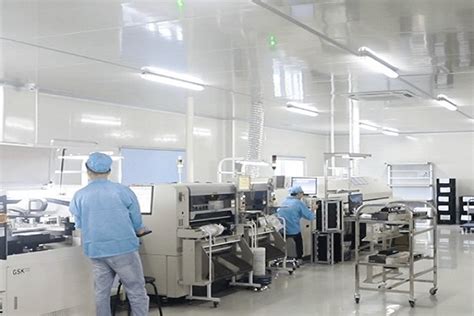Pcb health effects
Long-Term Health Risks of PCB Exposure
Polychlorinated biphenyls (PCBs) are a group of man-made organic chemicals that have been widely used in various industrial and commercial applications due to their non-flammability, chemical stability, and insulating properties. However, despite their utility, PCBs have been found to pose significant long-term health risks to humans. Understanding these risks is crucial for public health and safety, as well as for the development of effective regulatory policies.
One of the primary concerns associated with PCB exposure is its potential to cause cancer.
The International Agency for Research on Cancer (IARC) has classified PCBs as probable human carcinogens. Studies have shown that prolonged exposure to PCBs can lead to an increased risk of developing various types of cancer, including liver, kidney, and skin cancers. This carcinogenic potential is attributed to the ability of PCBs to induce oxidative stress and damage cellular DNA, thereby promoting the development of malignant cells.
In addition to their carcinogenic effects, PCBs have been linked to a range of other serious health issues.
For instance, they can adversely affect the immune system, making individuals more susceptible to infections and diseases. Research has demonstrated that PCB exposure can lead to immunosuppression, which impairs the body’s ability to mount an effective immune response. This is particularly concerning for vulnerable populations such as children, the elderly, and those with pre-existing health conditions.
Moreover, PCBs have been shown to disrupt endocrine function, which can have far-reaching consequences for human health.
These chemicals can mimic or interfere with the action of hormones, leading to hormonal imbalances. Such disruptions can affect reproductive health, leading to issues such as reduced fertility, developmental abnormalities, and even adverse pregnancy outcomes. Additionally, endocrine disruption can contribute to metabolic disorders, including obesity and diabetes, further exacerbating the health risks associated with PCB exposure.
Neurological effects are another significant concern.
Exposure to PCBs, particularly during critical periods of development such as in utero or early childhood, has been associated with neurodevelopmental deficits. These can manifest as cognitive impairments, learning disabilities, and behavioral problems. The neurotoxic effects of PCBs are believed to result from their ability to interfere with neurotransmitter function and disrupt normal brain development.
Furthermore, PCBs can have detrimental effects on the cardiovascular system.
Studies have indicated that PCB exposure is linked to an increased risk of cardiovascular diseases, including hypertension, atherosclerosis, and coronary artery disease. The mechanisms underlying these effects are thought to involve inflammation, oxidative stress, and alterations in lipid metabolism.
Given the extensive range of health risks associated with PCB exposure, it is imperative to minimize human contact with these hazardous chemicals.
Regulatory measures have been implemented in many countries to limit the production and use of PCBs, but their persistence in the environment means that exposure can still occur through contaminated air, water, soil, and food. Therefore, ongoing efforts to monitor and remediate PCB-contaminated sites are essential to protect public health.
In conclusion, the long-term health risks of PCB exposure are multifaceted and significant. From carcinogenic effects to immune, endocrine, neurological, and cardiovascular impacts, the potential for harm is substantial. Continued research, regulation, and remediation efforts are necessary to mitigate these risks and safeguard human health for future generations.

PCB Contamination in Drinking Water: Health Implications
Polychlorinated biphenyls (PCBs) are synthetic organic chemicals that have been widely used in various industrial and commercial applications due to their non-flammability, chemical stability, and insulating properties. However, their persistence in the environment and potential for bioaccumulation have raised significant concerns regarding their impact on human health, particularly when they contaminate drinking water sources. Understanding the health implications of PCB contamination in drinking water is crucial for public health and safety.
PCBs can enter drinking water supplies through several pathways, including industrial discharges, improper disposal of PCB-containing materials, and leaching from landfills.
Once in the water, PCBs can persist for long periods due to their resistance to natural degradation processes. Consequently, they can accumulate in the food chain, posing a risk to human health when contaminated water is consumed.
Exposure to PCBs through drinking water has been linked to a range of adverse health effects.
One of the primary concerns is their potential to act as endocrine disruptors. PCBs can interfere with the normal functioning of the endocrine system, which regulates hormones responsible for growth, development, and metabolism. This disruption can lead to developmental and reproductive issues, particularly in vulnerable populations such as pregnant women and young children. Studies have shown that prenatal exposure to PCBs can result in lower birth weights, developmental delays, and cognitive impairments in children.
In addition to endocrine disruption, PCBs are also classified as probable human carcinogens by the International Agency for Research on Cancer (IARC).
Long-term exposure to PCBs has been associated with an increased risk of various cancers, including liver, kidney, and skin cancers. The carcinogenic potential of PCBs is attributed to their ability to induce oxidative stress, DNA damage, and alterations in gene expression. These mechanisms can lead to the initiation and progression of cancerous cells in the body.
Furthermore, PCBs have been implicated in adverse effects on the immune system.
Chronic exposure to PCBs can weaken the immune response, making individuals more susceptible to infections and diseases. This immunotoxicity is particularly concerning for individuals with pre-existing health conditions or compromised immune systems. Additionally, PCBs have been linked to cardiovascular issues, such as hypertension and heart disease, due to their ability to disrupt lipid metabolism and promote inflammation.
Given the serious health risks associated with PCB contamination in drinking water, it is essential to implement effective measures to mitigate exposure.
Regulatory agencies, such as the Environmental Protection Agency (EPA), have established maximum contaminant levels (MCLs) for PCBs in drinking water to protect public health. These regulations require regular monitoring of water supplies and prompt remediation efforts when PCB levels exceed the established limits. Moreover, public awareness campaigns can educate communities about the sources and risks of PCB contamination, encouraging proactive measures to reduce exposure.
In conclusion, PCB contamination in drinking water poses significant health risks due to their persistence, bioaccumulation, and potential for endocrine disruption, carcinogenicity, and immunotoxicity. Understanding these health implications underscores the importance of stringent regulatory measures and public awareness to safeguard drinking water quality and protect human health. By addressing PCB contamination proactively, we can mitigate its adverse effects and ensure a safer and healthier environment for future generations.

Occupational Hazards: PCB Exposure in the Workplace
Polychlorinated biphenyls (PCBs) are synthetic organic chemicals that have been widely used in various industrial applications due to their non-flammability, chemical stability, and insulating properties. However, despite their utility, PCBs pose significant health risks, particularly in occupational settings where workers may be exposed to these hazardous substances. Understanding the occupational hazards associated with PCB exposure is crucial for implementing effective safety measures and protecting worker health.
Workers in industries such as electrical equipment manufacturing, waste management, and construction are at a heightened risk of PCB exposure.
This exposure can occur through inhalation of contaminated air, dermal contact with PCB-laden materials, or ingestion of contaminated food and water. Once inside the body, PCBs can accumulate in fatty tissues and persist for long periods, leading to chronic health issues. Consequently, it is imperative to recognize the potential health effects and implement strategies to mitigate these risks.
One of the primary health concerns associated with PCB exposure is its potential to cause cancer.
The International Agency for Research on Cancer (IARC) has classified PCBs as probable human carcinogens. Epidemiological studies have shown a correlation between PCB exposure and an increased risk of cancers such as melanoma, liver cancer, and non-Hodgkin lymphoma. These findings underscore the importance of minimizing exposure in occupational settings to reduce the incidence of cancer among workers.
In addition to carcinogenic risks, PCB exposure can lead to a range of non-cancerous health effects.
For instance, PCBs have been linked to adverse effects on the immune system. Workers exposed to high levels of PCBs may experience immunosuppression, making them more susceptible to infections and diseases. Furthermore, PCBs can disrupt endocrine function, leading to hormonal imbalances that can affect reproductive health. Studies have indicated that PCB exposure may result in reduced fertility, menstrual irregularities, and developmental issues in offspring.
Neurological effects are another significant concern.
Chronic exposure to PCBs has been associated with neurobehavioral and cognitive deficits. Workers may experience symptoms such as memory loss, difficulty concentrating, and mood disturbances. These neurological impairments can not only affect the quality of life but also reduce workplace productivity and safety.
Moreover, PCBs can have detrimental effects on the cardiovascular system.
Research has shown that PCB exposure is linked to an increased risk of hypertension, coronary artery disease, and other cardiovascular conditions. These health issues can lead to long-term disability and increased healthcare costs, emphasizing the need for preventive measures in the workplace.
Given the myriad health risks associated with PCB exposure, it is essential for employers to implement comprehensive safety protocols.
This includes regular monitoring of PCB levels in the workplace, providing personal protective equipment (PPE) to workers, and ensuring proper ventilation systems are in place. Additionally, workers should receive training on the hazards of PCBs and the importance of following safety guidelines to minimize exposure.
In conclusion, PCB exposure in the workplace presents significant occupational hazards that can lead to serious health effects, including cancer, immune system suppression, endocrine disruption, neurological impairments, and cardiovascular issues. By understanding these risks and implementing effective safety measures, employers can protect their workers and promote a healthier work environment. The importance of vigilance and proactive management cannot be overstated in mitigating the adverse health effects associated with PCB exposure.

PCB Exposure and Its Impact on Child Development
Polychlorinated biphenyls (PCBs) are a group of man-made organic chemicals that have been widely used in various industrial and commercial applications due to their non-flammability, chemical stability, and insulating properties. Despite their beneficial uses, PCBs have been identified as environmental contaminants with significant health risks, particularly for children. Understanding the impact of PCB exposure on child development is crucial for public health and safety.
Exposure to PCBs can occur through various pathways, including ingestion of contaminated food, inhalation of polluted air, and dermal contact with contaminated soil or water.
Once in the body, PCBs can accumulate in fatty tissues and persist for long periods, leading to chronic exposure. This is particularly concerning for children, who are more vulnerable to the adverse effects of toxic substances due to their developing bodies and behaviors that increase exposure risk, such as hand-to-mouth activities.
Research has shown that prenatal and early-life exposure to PCBs can have detrimental effects on neurodevelopment.
Studies have linked PCB exposure to cognitive deficits, including lower IQ scores, impaired memory, and reduced attention span. These cognitive impairments are believed to result from PCBs’ ability to disrupt thyroid hormone function, which is essential for brain development. Additionally, PCBs can interfere with neurotransmitter systems, further contributing to neurodevelopmental issues.
Moreover, PCB exposure has been associated with behavioral problems in children.
Elevated levels of PCBs have been correlated with increased incidences of attention-deficit/hyperactivity disorder (ADHD) and other behavioral disorders. These associations suggest that PCBs may affect the brain regions involved in behavior regulation, such as the prefrontal cortex and basal ganglia. Consequently, children exposed to higher levels of PCBs may exhibit difficulties in school performance and social interactions.
In addition to neurodevelopmental and behavioral effects, PCBs can also impact physical growth and development.
Studies have indicated that children exposed to PCBs may experience growth retardation, including reduced birth weight and smaller head circumference. These growth impairments are concerning as they can have long-term implications for overall health and development. Furthermore, PCBs have been linked to endocrine disruption, which can affect the normal functioning of the hormonal systems that regulate growth and development.
The immune system is another critical area affected by PCB exposure.
Children exposed to PCBs may have a higher susceptibility to infections and a weakened immune response. This immunotoxicity is particularly alarming as it can lead to increased morbidity and affect the overall well-being of children. Additionally, there is evidence suggesting that PCB exposure may increase the risk of developing certain cancers later in life, further highlighting the long-term health risks associated with these chemicals.
Given the significant health risks posed by PCB exposure, it is essential to implement measures to reduce and prevent exposure, particularly among vulnerable populations such as children.
Public health initiatives should focus on educating communities about the sources and risks of PCB exposure, promoting safe practices to minimize contact with contaminated materials, and advocating for policies that limit the release of PCBs into the environment. Additionally, ongoing research is needed to better understand the mechanisms by which PCBs affect child development and to develop effective interventions to mitigate these effects.
In conclusion, PCB exposure poses a serious threat to child development, affecting cognitive, behavioral, physical, and immune health. The persistence and bioaccumulative nature of PCBs make them a significant public health concern. Therefore, concerted efforts are required to protect children from the harmful effects of these toxic chemicals and to ensure a healthier future for the next generation.




